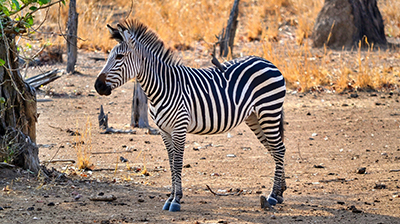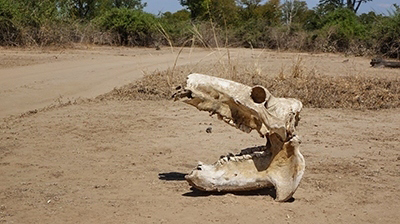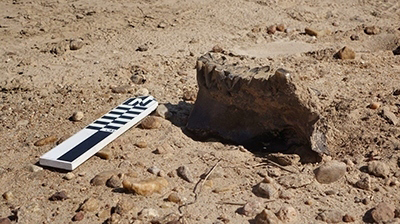プログラム調査日程・空き状況・参加費用等、海外調査に関するお問い合わせは、アースウォッチ・ジャパン事務局にて承ります。info@earthwatch.jp までお気軽にお問い合わせください。
Join researchers in the stunning Luangwa River Valley of eastern Zambia to search for bones, fossils, and living animals. These data will help researchers better understand how mammalian communities have shifted over time in response to climate change.
In the Luangwa River Valley, the past meets the present as diverse mammal communities, including antelopes, elephants, and even the endangered Thornicroft’s giraffe, live atop exposed fossil deposits. Cutting through the valley, the Luangwa River is the lifeblood of the whole region. Its spectacular ‘oxbow’ lagoons and flooded riverbanks attract some of the densest concentrations of animals in all of Africa. Not only is the region home to the world’s largest concentration of hippos, but it also hosts some of Africa’s largest populations of lions, leopards, and wild dogs.
While conservationists are working to preserve this extraordinary area, the increasingly devastating impacts of climate change threaten to wipe out endangered predators and permanently alter other animal communities. Researchers hypothesize that the key to protecting the incredible animal communities currently in this area can be uncovered by delving into the area’s past. By examining the bones of recently deceased animals, the area’s plentiful fossils, and the populations of animals currently living in the park, researchers will be able to investigate how mammalian communities have responded to climatic conditions over time. These insights will help researchers determine how to best preserve the area’s biodiversity in the face of today’s rapidly changing climate.
You’ll have the rare opportunity to hike off-trail through the breathtaking Luangwa River valley to help researchers uncover fossils and search for the bones of recently deceased animals. You’ll also roam the park in a safari vehicle to record the spectacular diversity of animals found within, including kudu, eland (the world’s largest antelope), Cape buffalo, and crocodiles. You’ll also see dozens of bird species along the way!
ボランティアの役割
When you arrive, you’ll be trained in bone and fossil identification as well as survey methods. You’ll then use those skills to help researchers:

From a safari vehicle, you’ll search the park for animal communities, recording the species, number of animals present, and GPS coordinates of the animals you find.

Accompanied by trained park scouts, you will hike off-trail through the river valley to search for the bones of recently deceased animals. You’ll record the type and location of each species, and other information about their condition.

Accompanied by trained park scouts you’ll traverse fossil-rich areas to find exposed fossils. You’ll also assist in digs to search for fossils and sieve the excavated dirt.
